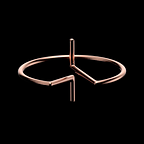CHARACTERIZATION OF SUPERCONDUCTING QUBITS USING DIRECT MICROWAVE SYNTHESIS
In this application note, we present a typical use-case for superconducting qubit control platforms, namely, the standard measurements of qubit coherence and how to extract qubit coherence. The Tabor Proteus P9484M-AWT PXI platform provides a solution wherein the microwave pulses of a single compact module can be directly generated by the device and recorded on the return side.
Application note presented at the American Physical Society meeting, March 14–18, 2022 Chicago, IL
Electronics for operating superconducting quantum processors must be able to control and manipulate the qubit states rapidly and precisely. Conventional control systems rely on the purity of ultra-phase-stable oscillators to upconvert very-low-noise baseband pulses. Such systems can become prohibitively expensive and complex when scaling to larger quantum devices, especially when high sampling rates are desirable for fine-grained pulse shaping.
Few-gigahertz digital-to-analog converters (DACs) present a more economical method for high-fidelity control while simultaneously providing greater control over the shape of synthesized signals. Modern DACs with extra-wide bandwidths can directly synthesize tones above their sampling rates, thereby keeping the system clock rate at a level compatible with modern digital logic systems, while still being able to generate high-frequency pulses with arbitrary profiles.
Bleximo has incorporated superconducting qubit control logic into Tabor’s Proteus P9484M-AWT multi-channel module (4 output channels, 16-bits), which is capable of low-noise direct synthesis of up to 8.0 GHz or higher with a sampling clock at 9.0 GHz. An integrated digitizer with a sampling rate of up to 5.4 GHz and a resolution of 12 bits is then used to capture the feedback signal. This approach enables high-resolution control and a reduced number of required signal sources, mixers, other microwave devices, and cables per qubit. The signal can then be either digitally up-converted or directly generated in the AWG sub-system.
Scan to download P9484M-AWT specification sheet
We characterized the performance of the hardware using an 8-qubit superconducting device operated at 10 mK and demonstrated the consistency of the measured coherence (T1 ~ was previously measured to be ~80 us using a setup based on the up/down conversion scheme). In these experiments, we used Proteus’ DACs and digitizers both as independent modules and as an integrated system (Fig. 1(a)). In our chip, each fixed-frequency transmon qubit is driven by an individual control line, and readout is achieved with a single readout line coupled to individual readout resonators (Fig. 1(b)). Therefore, the DAC offers an efficient alternative to conventional up-conversion systems that require two dual-quadrature baseband signals be upconverted with IQ mixers driven by separate microwave sources.
Figure 1. (a) Experimental schematic for single-qubit characterization with direct microwave signal synthesis and detection by an integrated Tabor Proteus P9484M-AWT system. (b) In this experiment we used an 8-qubit processor with fixed-frequency transmon qubits and multiplexed readout. In our chip, qubits form a loop and are coupled to two of their nearest neighbors.
The measurement scheme used to measure T1-decay time of a qubit is shown in Fig. 2:
- Find and characterize readout resonators (frequency/amplitude)
- Pulsed spectroscopy (find qubits)
- Rabi oscillations (calibrate qubit excitation pulses)
- Measure T1
Figure 2. The Proteus P9484M-AWT system is controlled by Bleximo code to synthesize microwave signals and process the responses. The black dots in Fig. 2(a) and blue dots in Fig. 2(b)-(d) present data, whereas the red lines are fits, from which qubit characteristics are determined. (a) Readout resonator characterization. The red line in this panel is interpolation (not fit). Its derivative is used to determine the resonator frequency. (b) Pulsed qubit spectroscopy. Due to the specifics of our chip design, each readout resonator exhibits coupling to several qubits. © Rabi oscillations (non-saturation pulse with varying length immediately followed by a readout pulse). (d) T1 measurements (π-pulse followed by a readout pulse after a delay time τ).
Figure 3. Additional calibration and validation tests at different power levels and frequency detuning. (a) Rabi oscillations versus vs detuning frequency at a high drive power. (b) Qubit spectroscopy at different power levels. It is clearly visible that the qubit frequency is only slightly dependent on the drive power.
In many realistic superconducting processor calibration, test, and operation scenarios, the qubit frequency under strong drive (fast operation) can be different than that under weak or no drive (idle). Precise characterization and calibration are thus needed. Examples of such tests are shown in Fig. 3. Note, that depending on the properties of the processor, additional signal amplification may be required on the drive lines.
In summary, we characterized the performance of Tabor’s Proteus P9484M-AWT using an 8-qubit superconducting device operated at 10 mK and demonstrated the consistency of qubit coherence vs platforms utilizing the up/down conversion scheme. The exceptional flexibility and simplicity of the setup further establish a foundation for scalable quantum control beyond intermediate-scale devices.
Contact person:
Please reach out for more information.
Alexei Marchenkov
CEO, Bleximo Corp.
info@bleximo.com cc: alexei@bleximo.com
Originally published at https://medium.com on March 16, 2022.
